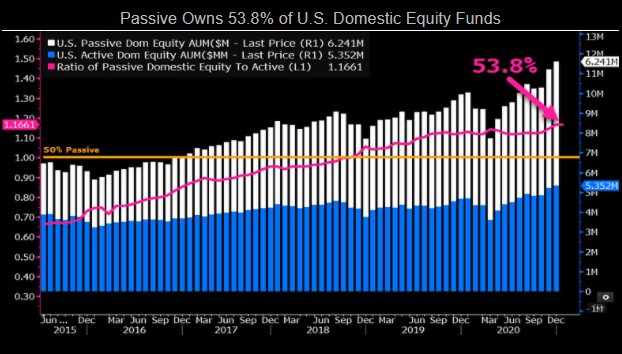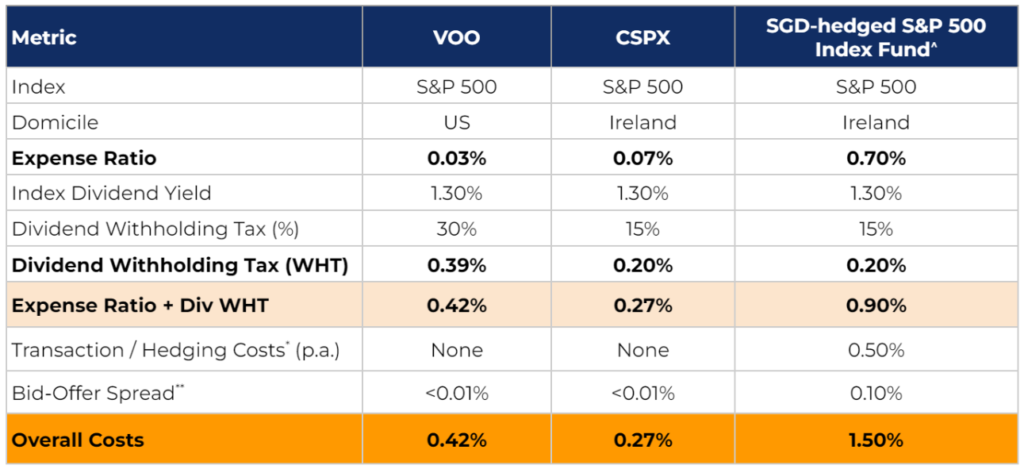Passive investing has helped regular investors save billions of dollars in costly fund management fees. It has made building a diversified portfolio as simple as a few clicks of the mouse. Best of all, it has allowed investors to receive fair market returns by doing almost nothing.
The passive investing momentum has picked up even more in the last few years. Investors have flocked to passive investments like index funds and ETFs to invest at far lower fees. Passively managed funds currently make up around 54% of the US domestic equity fund market, driven largely by the growth of funds tracking the S&P 500 and other broad US indices. In 2000, their market share was just over 10%.

Studies have shown over and over again that actively managed funds almost always underperform passive investments in the long run. According to the SPIVA US Scorecard for 2021, active large-cap funds continued to lag their passive counterparts for the 12th consecutive calendar year: 85% of large-cap funds underperformed the S&P 500.
Some index funds charge high fees
Now, while ETFs have been the poster child of passive investing, traditional active fund managers have picked up on the trend by introducing index funds to capture a piece of this movement. Investors need to carefully evaluate index funds before investing as some can come embedded with much higher fees than their ETF counterparts.
Take for example, investing into the world’s best known index – S&P 500. One can easily invest into it through ETFs such as VOO, IVV and CSPX which are managed by the world’s leading asset managers. The cost of investing into these is just 0.03% – 0.07% a year.
On the other hand, a SGD-hedged index fund on S&P 500, which is essentially a wrapper on an ETF such as VOO, can cost 20 times as much: 0.60% – 1.00%. It is important to note that not all index funds charge low fees.
As shown below, CSPX is the most cost effective way to invest into S&P 500. VOO has a lower expense ratio but overall cost of investing is higher than CSPX due to higher dividend withholding tax for US ETFs. However, the SGD index fund comes out to be way more expensive compared to either of the above.
In terms of access, both VOO and CSPX are available on Syfe Wealth as part of our custom portfolios offering. In fact, we use CSPX as a building block for our core portfolios. We also screen these ETFs for liquidity, bid-ask spread and tracking error before adding them to our portfolio offerings. Building core portfolios with the index fund, on the other hand, will be almost three times more expensive and much less efficient.

*Transaction and hedging costs for funds are estimated to be 0.5% on average based on Lumint data.
**Mutual fund bid-offer spread estimated to be approx. 0.10% based on data from National Bank Financial
These hidden costs have a direct impact on returns. As you can see from the table below, while CSPX has performed better than the index, the SGD index fund’s performance is about 1.50% lower on an annualized basis over the last 10 years.

On top of this, when you add in platform fees, an investor’s overall cost can go as high as 1.83%. This is even with trailer fees rebates that other digital advisors provide to offset costs. Investors should ask questions around why they are paying more fees for the same funds.




You must be logged in to post a comment.